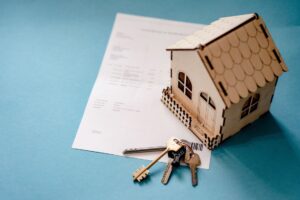Commercial real estate investments serve as long-term means of income for investors. However, the size of returns, yield, an investment generates determines whether it is indeed a good investment or not. To figure this yield out, you have to thoroughly assess your figures. So, how do you calculate commercial property yield?
How Do You Calculate Commercial Property Yield?
You calculate a commercial property’s yield by dividing the annual rent by the purchase price and multiplying that figure by 100. For example, if you purchased a property at $400,000 and you rent it out at $25,000 per annum, that means you get a yield of 6.25%, ($25,000/$400,000 ✖ 100 = 6.25%).

Essentially, the higher the percentage calculated, the better your yield. For commercial properties, a good yield is considered to be a rate of 5% or more. However, the ideal figure will vary widely based on location, property type, and operational costs.
Types of Yield
A yield is a measurement of a property’s return on investment. Before we move on, we would like to establish that there are two major types of yield that apply to commercial property investment. We shall discuss them below.
Gross Yield
The gross yield refers to the return on investment in a property without any deductions of costs. It is derived by dividing the property’s annual rent by the property’s value, purchase price, and multiplying by 100, as explained above.
We shall go through another example for emphasis. If you purchase a commercial property for $800,000 and rent it out for $2,000 a week, ($104,000 annually) to calculate the annual yield on your investment, simply divide $104,000 by $800,000, and multiply the result by 100. This will give you an annual yield of 13%.
However, gross yield is used very rarely when calculating the yield on commercial properties. This is because unlike with residential properties, the rent charged for commercial properties mostly includes the operational costs of the property.

Net Yield
A net yield is the return on investment you have left after deducting operational costs incurred on the property. It is calculated by deducting the expenses from the annual rent and dividing the figure by the property’s purchase price. Examples of costs you can incur on a property are:
- Costs of any necessary repairs
- Maintenance costs
- Building insurance
- Property taxes
- Land tax -if you happen to own many properties
- Closing costs during property purchase
- Interest and mortgage repayment
- Base property outgoings such as council rates, water rates, land tax, building insurance, and strata levies
- Other property outgoings include fire safety inspections and repairs, air conditioning servicing and repairs, and all other fees that go into property management.
Here is a calculation of a net yield using the same figures used in the previous example. If you buy the property for $800,000 and rent it out for $2,000 weekly ($104,000 yearly), but during and after purchase, you have spent a total of $8,000 on some of the costs mentioned above.
To work out your net yield, you simply deduct $8,000 from $104,000, which gives you $96,000. Then you divide $96,000 by $800,000 and multiply by 100. Your net yield will be 12%.

Related Questions
How Does Location Affect Yield on a Commercial Real Estate Property?
The location of a property plays a huge role in the percentage of yield that it generates. Typically, properties located in areas where there is easy accessibility, a higher number of potential tenants, and similar commercial properties have a higher likelihood of leasing for at a higher price, hence generating a better yield.
Also, the local market in which a property is located could affect its yield. In high blooming markets, where the average sales or rental price of properties are high, yields are also equally high. For example properties in Cincinnati, whose local market experienced a 17% increase in home value over the last year, would have a good yield.
What Is the Difference Between Net Yield and Gross Yield?
Net yield is the return on an investment after all operational costs have been deducted from the annual earnings, while gross yield is the return on investment without any deductions in cost.
How Can I Make Calculating My Commercial Property Yield Easier?
If you are experiencing challenges while trying to calculate the yield on your commercial property, you should contract the services of a professional real estate company such as the Si Vales Valeo Real Estate, which has agents with the expertise you need to make the right calculation.
Conclusion
Before making any investment in commercial real estate, investors need to have a deep-rooted understanding of commercial property yields to avoid running at a loss. With this article, we aim to equip you with the knowledge of how net yields are calculated, so you can be on your way to investing.






